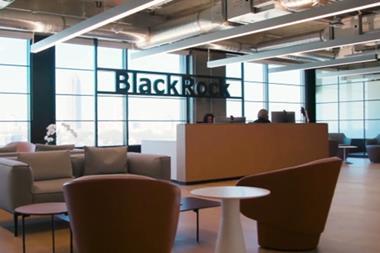EUROPE - London-based credit specialist BlueBay Asset Management is getting ready to launch a new Emerging Market High Yield Corporate Bond fund in response to reverse enquiries from European institutional investors, reflecting growing investor demand for diversified emerging markets exposure.
The plans follow the rollout of an Emerging Market Investment Grade Corporate Bond fund in March this year, in response to reverse enquiries from European pension funds.
BlueBay has pioneered the EM corporate asset class since 2007, when it worked with JPMorgan to develop the JP Morgan Corporate Emerging Market Bond index (CEMBI).
That became the benchmark to its flagship Emerging Market Corporate Bond fund, launched in April 2008.
Polina Kurdyavko, senior portfolio manager, said BlueBay thinks that combining investment grade and high yield is the optimal way to invest in EM corporates - she cited the "optionality" the firm has exploited this year to protect against the summer sell-off.
The investors who requested an investment-grade version faced restrictions against high-yield exposure, she explained.
Meanwhile, BlueBay has been waiting for the opportune time to launch a high-yield product.
"We specifically did not want to launch at the beginning of this year because we felt spreads were too tight - but with high-yield down 15% over the last couple of months, the opportunity set is far more appealing," said Kurdyavko.
EM corporates, around 700 companies with about $830bn (€600bn) of debt outstanding, have been coming of age.
"A lot of investors feel it's a high-yield dominated universe of private companies that nobody knows anything about," said Kurdyavko.
"The reality is that it's two-thirds investment grade with an index that has a BBB rating. More than 50% of the companies already have equity outstanding."
While EM equities have outperformed EM corporate bonds on a total-return basis on a 10-year horizon, they have not over two or even five years. Moreover, corporate bonds win-out on a risk-adjusted basis over all horizons.
While Merrill Lynch put the average recovery rate from Asian corporates in 2001 at 21 cents-on-the-dollar, during the 2009 downturn, that had become more than 40 cents-on-the-dollar - better than recovery rates from US or European defaulted credits.
And future prospects are good, too. The average EM corporate net debt-to-EBITDA ratio is 1.4-times - substantially lower than leverage of similarly rated developed market companies - and their cash balances per unit of debt are also double those of similarly rated developed market companies.
If anything, those cash levels are sub-optimal for return-on-equity and argue strongly in favour of holding bonds, Kurdyavko suggested.
"To have zero weighting to these companies that contribute one-third of global GDP and have great fundamentals is the wrong thing to do, in our opinion," she said.
That is not to say there is not a lot of diversity. The universe of 60 countries includes those with world-class corporate governance standards such as South Korea, Hong Kong and Singapore, but also more challenging places like Ukraine, for example.
Some Brazilian companies that faced liquidity problems in the past now run hyper-conservative balance sheets, while some Chinese real estate firms are so used to double-digit top-line growth they feel compelled to deliver those numbers despite changes in macro conditions.
"This is why we place such an emphasis on the bottom-up approach," said Kurdyavko. "Moving from EM sovereign to EM corporate involves hiring an entirely new team - an expensive exercise if you're about to launch a $20m fund.
"BlueBay invested early on in developing its EM corporate business, and we currently have one of the largest dedicated teams on the market. There are about 20 managers in this space, but the majority of the funds have been launched in the past 12-18 months."
Investors in EM sovereign bonds will know that issuance has become almost exclusively local-currency over the past 5-7 years, and they have been happy to take that risk in anticipation of exchange-rate appreciation as these economies grow.
The EM corporate world remains largely hard-currency. This is partly because many issuers have natural US-dollar exposures: many are exporters in the commodity sectors or financials writing USD loans; even domestic-orientated sectors like telecoms have often issued to finance international expansion; and Asian utilities charge tariffs linked to USD.
But there is latent demand for local-currency funding among some larger Latin American utilities and retailers, for example, or smaller Russian high-yielders who are not big enough to access the USD market or do not have IFRS or GAAP accounts.
The barrier for institutional investors like BlueBay is uncertainty around local legal structures - "out of 100 companies in Russia that went through the courts to settle claims in 2009, I believe that 85 had recovery rates of 0-5 cents," said Kurdyavko - as well as the lack of liquidity.
However, BlueBay has been active in the local-currency euroclearable market - where companies issue in eurobonds that settle coupon and principal payments in dollars, but reference local currency each time they trade.
"We see that area growing, but it's still only a $20bn market today," said Kurdyavko. "We are working with an investment bank again to launch a euroclearable corporate index.
"If it becomes diversified enough, we could launch a fund off the back of that, but, at the moment, we feel it's too small."












No comments yet